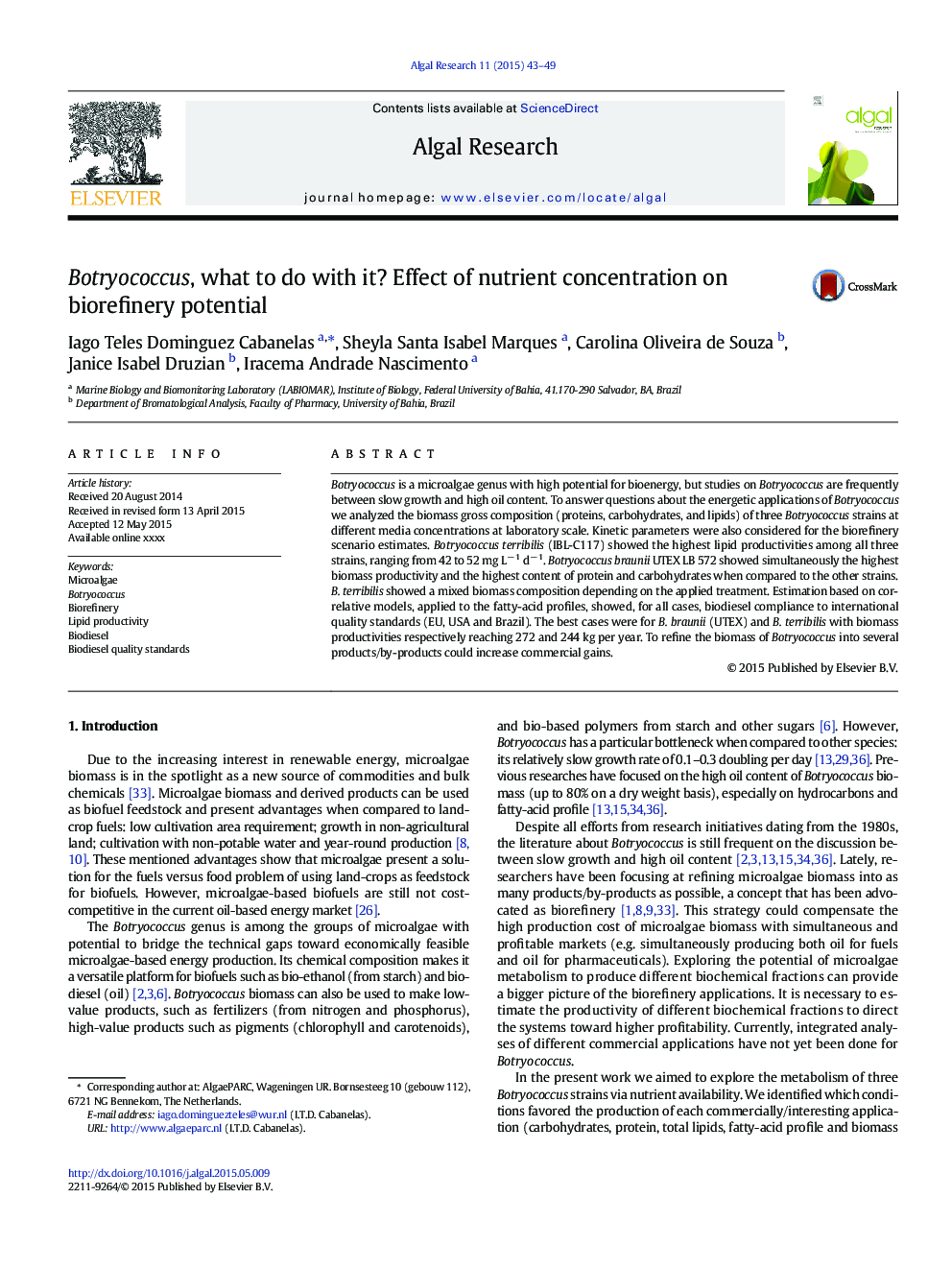| Article ID | Journal | Published Year | Pages | File Type |
|---|---|---|---|---|
| 8088089 | Algal Research | 2015 | 7 Pages |
Abstract
Botryococcus is a microalgae genus with high potential for bioenergy, but studies on Botryococcus are frequently between slow growth and high oil content. To answer questions about the energetic applications of Botryococcus we analyzed the biomass gross composition (proteins, carbohydrates, and lipids) of three Botryococcus strains at different media concentrations at laboratory scale. Kinetic parameters were also considered for the biorefinery scenario estimates. Botryococcus terribilis (IBL-C117) showed the highest lipid productivities among all three strains, ranging from 42 to 52 mg Lâ 1 dâ 1. Botryococcus braunii UTEX LB 572 showed simultaneously the highest biomass productivity and the highest content of protein and carbohydrates when compared to the other strains. B. terribilis showed a mixed biomass composition depending on the applied treatment. Estimation based on correlative models, applied to the fatty-acid profiles, showed, for all cases, biodiesel compliance to international quality standards (EU, USA and Brazil). The best cases were for B. braunii (UTEX) and B. terribilis with biomass productivities respectively reaching 272 and 244 kg per year. To refine the biomass of Botryococcus into several products/by-products could increase commercial gains.
Related Topics
Physical Sciences and Engineering
Energy
Renewable Energy, Sustainability and the Environment
Authors
Iago Teles Dominguez Cabanelas, Sheyla Santa Isabel Marques, Carolina Oliveira de Souza, Janice Isabel Druzian, Iracema Andrade Nascimento,
